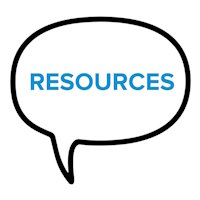You don’t have to be an expert to effectively manage your graphic novel and manga collections, readers advisory efforts, and programming to ensure you’re serving your readers well — you just have to know where to get your questions answered. In this free webinar, our expert panel of librarians address the differences between comics and manga; how to determine age-appropriate titles; and how to build and manage a collection that circulates.
We’ve also put together a brief FAQ and list of resources based on attendee questions.
PANELISTS
- Moni Barrette, past President, ALA’s Graphic Novel & Comics Round Table
- Stella Bromley, former District Librarian, Austin ISD
- Ashley Hawkins, School librarian, Brooklyn; Adjunct Professor, Queens College GSLIS
FAQs
What are comics and manga?
Comics is a medium that is delivered in many formats: panels, strips, Sunday Funnies, periodicals (comic books), graphic novels, manga, and webcomics. Like film or music, comics can tell stories in any genre and across a variety of formats.
Manga is the Japanese term for comics, and outside of Japan, it typically refers to comics FROM Japan. Manhwa is the Korean term for comics, while Manhua is the Chinese terms. (Anime is the Japanese term for animation, and many manga have anime adaptations, and vice versa.)
- Check out our Manga 101 primer for definitions of manga-specific categories (Shonen, Shoujo, etc.) and additional insights.
Webcomics are comics published online, typically first, while Webtoon is a platform for webcomics.
Age-appropriate comics and manga
Because of comics’ visual nature, determining an appropriate age for comics is often more subjective than with traditional prose, and cultural differences in Europe and Japan, in particular, add more nuance when dealing with translated works. Most publishers have their own age ratings and/or imprints for specific audiences, while professional reviewers will often note appropriate age ranges for specific titles. In some cases, reviews might only be available from amateur outlets or individual readers, so a close reading of the title itself may be required.
At LibraryPass, our age-appropriate guidelines are publicly accessible, and we also rely on a range of professional resources, including Booklist, Library Journal, School Library Journal, Publishers Weekly, as well as Good Comics for Kids, The Graphic Library, Manga Bookshelf, Manga Librarian, and No Flying No Tights. Other useful resources include Mackin and Common Sense Media.
Managing Your Collection
Building and maintaining a comics and manga collection that circulates can be an expensive challenge — especially when dealing with long-running manga series, or Western superheroes with dozens of iterations and story arcs. The most important first step is to shelve them in a dedicated section (including those old comics strip collections hiding in the 700s), with as many covers facing outwards as possible. If you have the space, separate comics from manga (and manga from manhwa); if not, genre-fication might be a better option.
Balance your print collection with digital access through platforms like Comics Plus, offering the first few volumes of the most popular series in the former, and a deeper collection in the latter. (And be sure to cross-promote both for maximum circulation!) Talk to your most avid readers and, if you have one, connect with your local comic book store for insights on what’s popular, under the radar, and past its prime.
Don’t be afraid to weed series that aren’t circulating, but always be aware of cross-media adaptations (movies, anime, games, etc.), or new work from a specific creator that might spark renewed interest in a dormant series.
Readers Advisory
What manga title(s) would you recommend to parents/teachers who are curious about the medium and don’t read graphic novels?
- The best recommendations are the ones you’ve read and enjoyed yourself, but Ashley’s “Every Manga Resource I Can Provide” is an excellent place to start.
“Can you recommend resources that help K-12 teachers think about how to use manga in the classroom?”
- Manga Classics are particularly popular in schools as accessible gateways to classic literature, while Cells At Work! (Kodansha) is popular for STEM/STEAM alignment.
- Check out Comics Plus’ free Comics in the Classroom resources.
What graphic novels would you recommend for Spanish readers?
- Spanish translations and/or bilingual editions are becoming more common, and some of our favorites include That Girl on TV Could Be Me! (Immedium), Quince (Fanbase Press), and Nos llamaron Enemigo (IDW).
What is some programming we can do for manga/comics besides a manga/anime/comics club?
- “Free Comic Book Day” is annual event for comic book stores that has seen more libraries participating over the years, and they have an official Library Partner Program now.
- Some libraries host their own Comic Cons, inviting local creators and cosplayers to participate and showcase their work, or conduct workshops.
- Many libraries use comics and manga for One Book – One Community/School reads, summer reading programs, and reading challenges. (Check out Comics Plus’ free programming resources.)
More Questions?
We couldn’t cover everything in one hour, and some questions are too specific for an FAQ, so if there’s something we missed, feel free to email us at info@librarypass.com and we’ll do our best!
Read All The Comics!
With Comics Plus, schools and libraries can offer readers unlimited access to thousands of digital comics, graphic novels, and manga from popular publishers like ABDO, Andrews McMeel, BOOM! Studios, Capstone, Dark Horse, Europe Comics, Fantagraphics, Graphic Mundi, Humanoids, Image Comics, Kodansha, Lerner, Manga Classics, Oni Press, Papercutz, Tokyopop, UDON Entertainment, Yen Press, and dozens more.
No holds, wait lists, or monthly borrowing limits—all at a price that won’t break your materials budget.
Learn more at comicsplusapp.com and sign up for a free demo account.

 We curate high-interest, immersive digital content that helps schools and libraries expand and diversify their collections—without breaking their materials budgets.
We curate high-interest, immersive digital content that helps schools and libraries expand and diversify their collections—without breaking their materials budgets.
